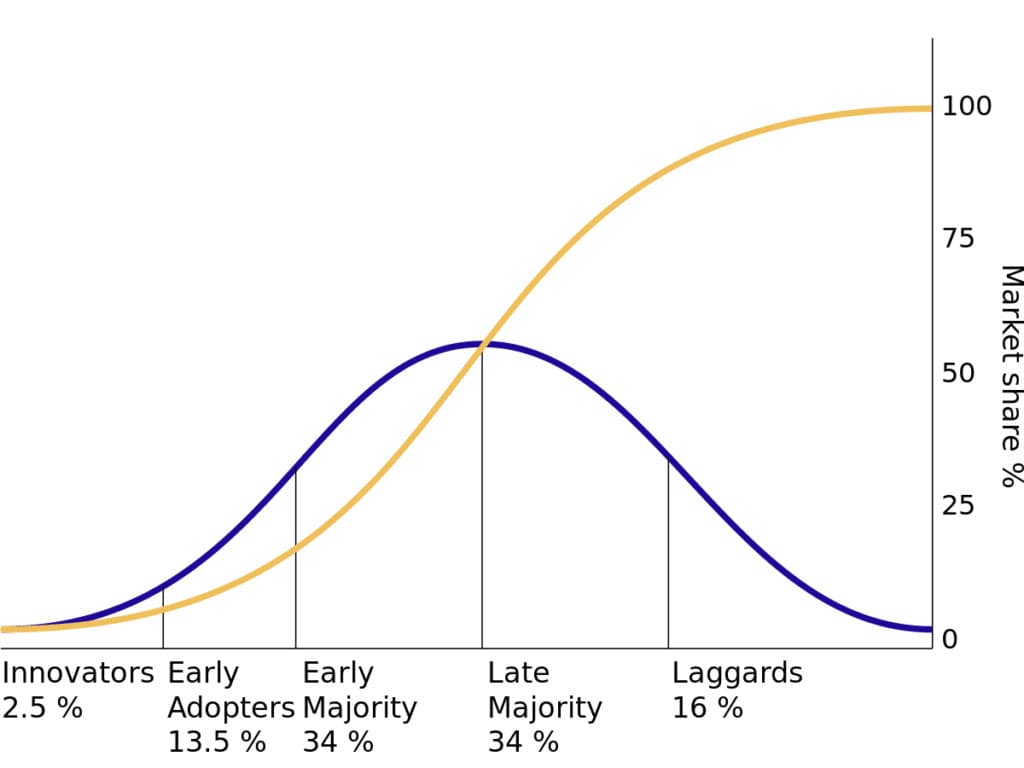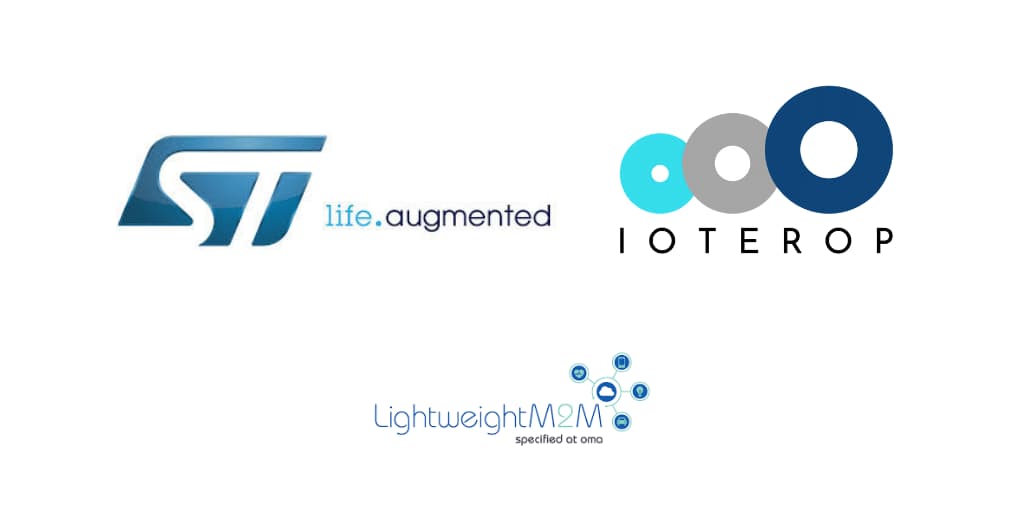Three Scalability Issues Affecting Adoption
“You can see the stars and still not see the light.” — The Eagles, Already Gone, 1974
Years of experience in technology have taught me a few hard lessons. The first lesson is that new technology is often over-hyped, forgetting that technology is a means, with business being the goal. As adoption begins, those steadfast few, the innovators, help us better understand the intrinsic business logic supporting adoption or see the light.
Technology Adoption Curve
 From Wikicommons
From Wikicommons
A recurring theme, as we progress from millions to billions of devices, is scalability. Scalability is omnipresent right now; companies are pivoting around the idea. MachNation, a Boston-based analyst group, recently launched a software platform to test vendor scalability claims. However, scalability is not just a technical issue, but instead can be broken out into several topics.
Scalability: Technological Considerations
Invariably when we invoke IoT scalability, we begin by talking about the technological elephant in the room–How do we manage billions of devices? These devices will need to communicate securely. Building services to address billions of devices will be technically challenging, but Internet server capacity and technology stacks are improving by the day. Our view is that this cloud-first focus conveniently overlooks a key constraint—the devices themselves.
Overcoming scalability starts with robust, efficient, standardized services on the device, not in the cloud. Is data being managed intelligently, or are devices wasting resources? Micro, granular choices have macro, solution-wide cost implications.
There is a direct correlation, if not causation, between efficient device management, scalability, and therefore operational costs.
Scalability: Operational Costs
The second wave of scalability is operational costs.
IoT is a means. Objectives are efficiency and profits. When deploying an object, some essential questions are the following:
- What about device operational anomalies? How are they serviced? Can it be done remotely? What operational needs and costs will remote devices require? A service organization. More IT resources. Each decision affects a solution’s cost basis.
- Will these devices have vulnerabilities during their lifecycle? The answer is yes. Devices are remote, constrained, and vulnerable. The real question is, what are the implications of these vulnerabilities? Industrial sabotage, IoT ransomware attacks, business disruption, reputation. It is impossible to imagine all the eventualities, but clearly, there will be challenges, and they will be costly, especially if left unaddressed.
- What are the implications of layering business processes on top of inadequately managed devices? Could smart devices meant to invigorate industries instead become a vast, distributed Achilles Heel? Some hypothesize “stupid” devices will create massive problems, equating poorly conceived IoT devices to asbestos. What will poorly executed solutions end-up costing?
Intelligently using IoT will create opportunities, with the opposite being true as well. Lack of device management will inflate operational costs limiting adoption.
Scalability: Sharing Data
Scalability’s third wave will be our ability to share and exploit data throughout the IoT ecosystem intelligently. We think of this as IoT 2.0.
Take a very concrete, imaginable use-case–the electric car:
- Your smart, electric vehicle is low on charge;
- The vehicle signals the need to your home’s smart meter;
- The smart meter purchases power at advantageous rates storing electricity in a battery;
- The battery recharges your car;
- Billing and reporting are all automated.
This use-case requires smart objects from different industries to securely, intelligently share data throughout diverse industrial ecosystems. Scalable IoT strategies must be flexible.
Successful organizations will capitalize on opportunities faster, less expensively, than their competition. Costs required to create or change a solution undermine business logic supporting IoT adoption, posing the real scalability challenge.
Device Management: The Foundation
Three take-aways:
- Device management efficiency affects solution quality and scalability—the more efficient the device services, the less the devices needlessly tax networks and storage.
- Device management service directly impacts operating costs. Costs and profits, not technology, will be the biggest challenge facing massive deployments. It is always, always about numbers.
- Device management services must be synonymous with change management. Solutions must evolve around business needs.
IoT will be smart from end-to-end, enterprise-to-consumer, industry-to-industry because it will be standardized, secure, and scalable.
About the author
Hatem is IoTerop’s CEO and co-founder of IoTerop. A former Intel employee, Hatem works to help organizations understand how standardized device management, and the supporting technologies, enable economically and operationally scalable IoT solutions.


